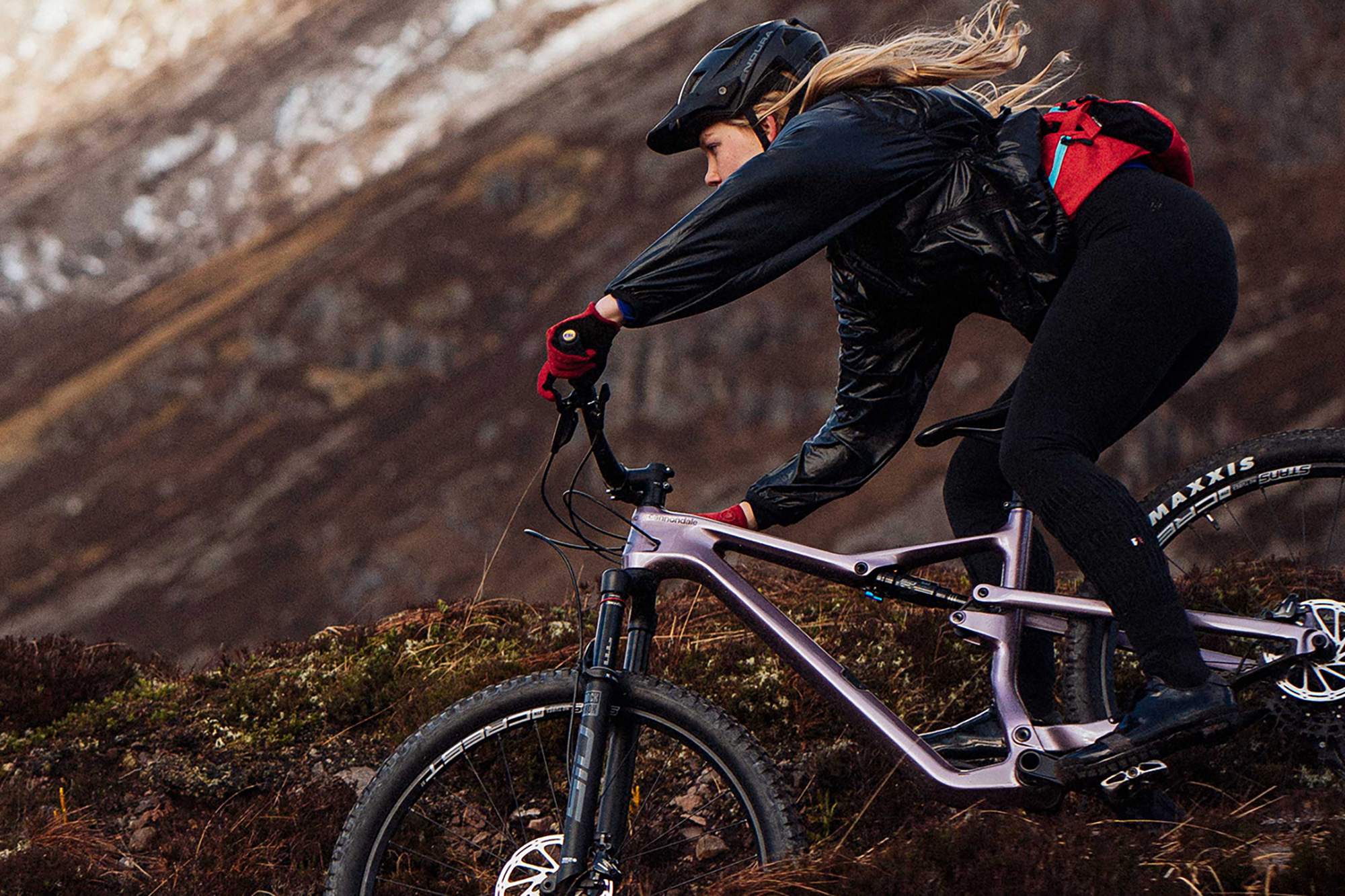Cross-country mountain biking: everything you need to know
If riding up hills and barrelling down descents at full speed tickles your fancy, cross-country mountain biking might just be the discipline for you

If you start looking at mountain bikes it's easy to get overwhelmed. There are so many types of mountain bikes and the differences between them can be very subtle. There's a push and pull between super-specific and well-defined categories that are at the same time very blurry. It's a lot to take in and that's why we are doing a deep dive into everything you need to know about cross-country riding. Cross-country (XC) mountain biking is yet another category, like trail mountain biking, that sounds general but is in fact very specific.
The basic premise for cross-country mountain biking is a focus on distance and speed instead of technical terrain. There's as much focus on pedaling efficiency up the hill as capability down the hill. The bikes are light, efficient and long-distance endurance is an important part of the genre.

- Types of mountain bikes: all the different mountain bike categories explained
- Best lightweight mountain bikes under 10kg
The history of cross-country mountain biking
To really understand something, it's important to look at its history. Cross-country mountain biking has a rich history that informs its present and future. Chris Cocalis, founder of premier off-road bicycle brand Pivot Bikes, is someone who knows a thing or two about cross-country bikes. He's been in the industry since the 90s and Pivot, founded in 2007, started with the genesis of its current World Cup XCO bike.
According to Chris, "the XC category is an interesting one because at one time it was really the true heart of mountain biking." He goes on to say that most general mountain bike enthusiasts rode XC bikes. They were easy to ride, and were plenty capable on the terrain that the majority of mountain bike enthusiasts wanted to tackle. In Chris's telling of the story, that general ease of use started to fall away. Technology allowed for more capable and longer-travel all-mountain bikes to pull riders away with increased efficiency. This in turn led to a period where "many XC bikes changed their focus from being great all-around performers to hyper-focused race weapons that sacrificed speed and agility over comfort and stability."
As with all things, the pendulum eventually started to swing back in the other direction. Cross-country started to borrow from the gravity-focused side of the sport, adopting slacker geometry, more suspension and dropper posts. Today's cross-country bikes are once again amazing platforms for a wide range of riders. They are light and incredibly efficient, with a high level of stability and comfort.
One piece of advice Chris shared is helpful in deciding if a cross-country bike is right for you: "many riders tend to 'over-bike' by buying more bike than they need for the terrain they are riding. It is important to be realistic with who you are as a rider, your capabilities, and the terrain you are riding. If jumping and riding off big ledges is not your thing, then a cross-country bike with 100-120mm of travel like the Mach 4SL will pedal better, ride better and overall provide a more well-rounded experience than something that is longer travel, heavier, and less efficient if you aren’t going to be able to utilize the capabilities of a longer travel bike."

What should you expect in a cross-country bike ?
With an understanding of the basic arc of cross-country bikes and where they stand today, you might be ready to dive into one for the riding you do. If so, it's time to get a little more specific about what to expect. The first place to start is some of the big technology debates.
Wheel size is still a little bit of a contentious subject in other disciplines of mountain biking, but in the cross-country segment, there's much less debate. At least in this category of mountain bikes, 29ers have mostly taken over as they make more sense for the kind of riding that cross-country entails. The larger wheels do a better job floating over rocks and roots which effectively smooths bumps, this helps carry more speed and saves energy over the longer distances that are involved.
While wheel size is somewhat settled, hardtail vs full suspension is still very much up in the air. Given that cross-country mountain bikes need to be highly efficient when pedaling and tackling less extreme terrain, a hardtail might make sense. If smooth singletrack and doubletrack riding is what you plan to use your bike for, then a hardtail will have an advantage, as it's lighter and more efficient. If you want to tackle rougher terrain, or just want extra comfort on long days, then full-suspension might be the ticket. Whether you choose a hardtail or full-suspension, expect travel to be in the 100-120mm range. It's also commonplace to find remote lock-outs for the suspension, allowing a rider to quickly engage and disengage the suspension from the handlebars depending on the surface they are riding.
The last big debate in the cross-country bike world is that of dropper posts. This is another area where you have the opportunity to take a cross-country bike and push it into the realm of a trail bike. The lightest and most efficient bike is always going to be a hardtail without a dropper. If you want something more capable then adding a dropper makes for a much more maneuverable bike when descending.
Cross-country bike geometry has always prioritized efficient pedaling and climbing positions and fast snappy handling. That means that cross-country mountain bikes tend toward a steeper head tube, which comes at the expense of stability. That said, as XCO courses have become increasingly technical, bikes have started becoming far slacker, with some geometry settling for head angles around the 67-degree mark.
Another area that cross-country bikes are seeing an evolution is in the cockpit. Handlebars are usually narrower and stems are longer on cross-country bikes. The longer stem puts the rider's weight forward for better pedaling and the narrower bars help with avoiding bar-height obstacles like trees on narrow trails. However, as geometry has started to become longer, slacker and lower, handlebar width has gotten wider and stem length shorter, so riders can make the most of the more capable geometry.
- Best lightweight mountain bikes under 10kg
- Best full-suspension mountain bikes
- Best hardtail mountain bikes

What about cross-country-specific clothes?
Every little bit of a bike design has undergone optimization so it only makes sense that clothing has too. The faster speeds, longer days, and more climbing means that many XC riders choose XC-specific clothing to match.
While downhill riders might sport baggies and body armor, cross-country riders will be the most likely to wear tight-fitting Lycra. Using bibs and jerseys that are similar to the road cycling world offers better ventilation, aerodynamics and muscle compression, on top of seated comfort for long days in the saddle. Of course, there is no trail fashion police telling you what to wear, so for those looking for a more casual look, consider a bib liner and a more fitted short paired with a technical t-shirt.
For racing, the best XC helmets are peakless road-style ones, as they are lighter and have better ventilation, however these helmets may not offer quite as much protection as the best half-shell helmets that are designed for trail riding. Again, just consider these as broad strokes that tend to better match the experience of cross-country mountain biking. Do whatever works best for you. Cross-country riders usually wear sunglasses as well to help stop trail debris, vegetation or mud from going in their eyes while riding.
Josh Ross was our US tech writer. He's most happy when talking about the finer details of how bicycle parts and components work, and enjoys putting his thoughts to words. He is a road cyclist at heart but can often be found taking the gravel road less traveled. Although he rarely races these days, he still enjoys a good Zwift session and race but will always choose the real world over pixels.
Height: 5'9"
Weight: 137 lb.

